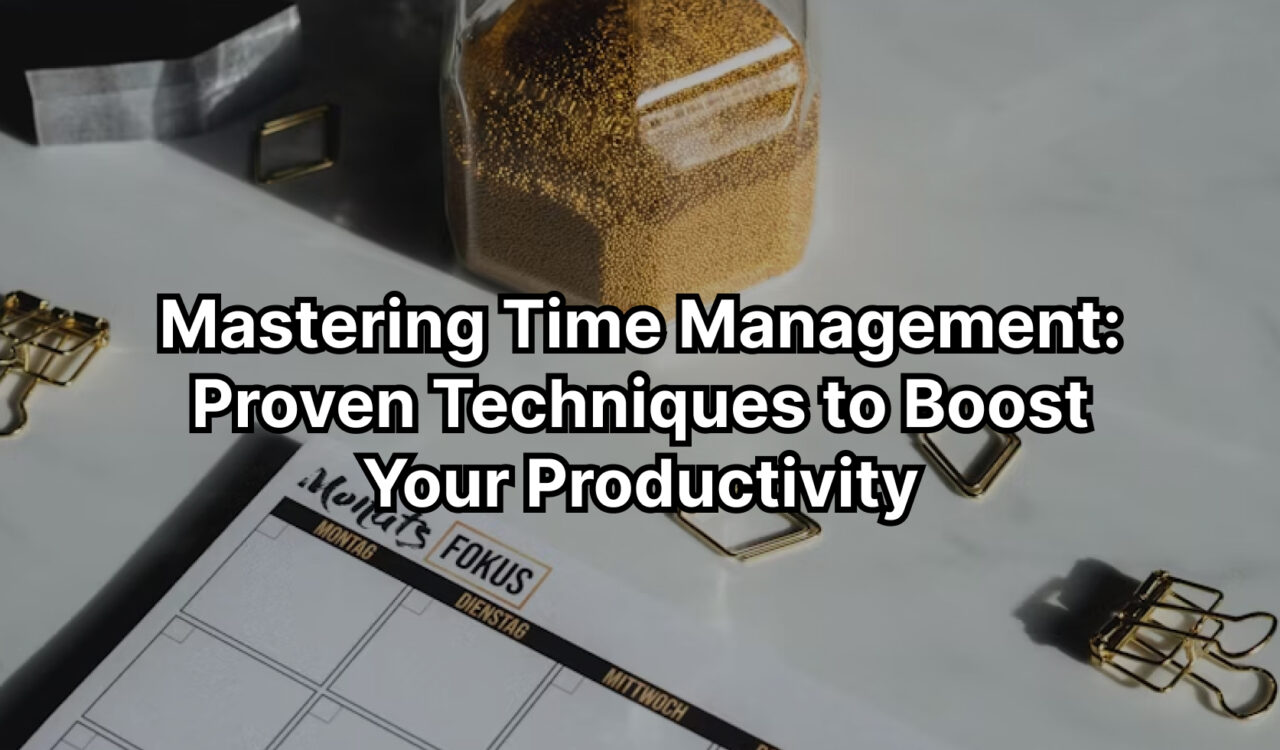In this article, we will discuss time management techniques and how they have become a part of our lives.
Yep, people have tried to manage their time even thousands of years ago
Time management is not some buzzword coined for the modern era but something that has been inherent in human civilization for centuries. As a matter of fact, with the rise of agriculture, a proper way of organizing time became necessary as the early societies had to schedule their activities with the seasons. The ancient Egyptians used sundials, while the Romans developed calendars. As societies became more complex over centuries, so did the strategies for managing time. Industrialization and the rise of corporate culture in the 20th century saw the emergence of time management, developed as a science itself with noted experts like Frederick Taylor and Peter Drucker pioneering ways to maximize efficiency. Time management is even more important today as we navigate fast-moving demands within the digital age.

Time is perhaps the only resource we all have in equal measure but are often never having enough of. That is why, whether one juggles multiple projects at work, a busy household, or tries to fit in personal development, wise time management is essential for achieving your goals and maintaining balance in life. Here, we consider six proven techniques that can help you make the most out of your time and increase your productivity.
Eisenhower Matrix: Prioritize with Precision
The Eisenhower Matrix is a powerful tool for prioritizing activities with regard to their urgent versus important qualities. Many times, we begin by tackling busy work because such tasks are easy; however, this approach might leave the most important tasks unfinished. To execute this technique:
- Urgent and Important: Do these tasks immediately.
- Important but Not Urgent: Schedule these tasks.
- Urgent but Not Important: Where possible, delegate these tasks.
- Not urgent and not important: Eliminate or delegate these tasks.
Why it works: Dividing your work this way, into four quadrants, keeps you focused on what really matters; making sure the tasks of higher impact will be prioritized.
80/20 Rule: Focus on What Really Matters
Also known as the Pareto Principle, the 80/20 Rule means that 80% of your output comes from 20% of your inputs. And when you’re overwhelmed in your work or life, you must find out and zero in on the most high-impact activities that will drive the greatest value.
Top 20% of:
- Tasks: 20% → 80% Impact
- Clients: 20% → 80% Revenue
- Relationships: 20% → 80% Value
- 20% of exercise → 80% of gains
Why it works: It cuts through the noise to help you focus your energy on the most value-yielding activities.
The 1-3-5 Rule: Simplify Your To-Do List
The 1-3-5 Rule is a simple, effective method of framing your day with just a few crucial tasks. The idea is to
- Identify 1 big task-the most important
- Select 3 medium tasks
- Select 5 small tasks
Why it works: Because you are focusing on a limited number of tasks, you don’t overwhelm yourself, and you’re more apt to do what you set out to do; hence, making you feel more productive and fulfilled with your day.
Eat That Frog: Do the Most Difficult Task First
That was first inspired by the concept of “eating the frog,” which in itself simply meant that if one tackles his most daunting task early in the morning, everything else would be a piece of cake compared to it. This tip is great once one procrastinates on something critical.
How to do it:
- Find the task you’ve been avoiding.
- Schedule it as the first task of the day.
- Get it done and celebrate your progress.
Why it works: Overcoming the psychological hurdle of a dreaded task early in the day gives you momentum to carry through the rest of your tasks.
Deep Work: Achieve Laser Focus
Deep work is all about giving undivided time to create, think deeply about, and focus on one’s most important tasks in a world full of distractions. This technique can considerably improve someone’s productivity.
How to succeed:
- Schedule blocks in your calendar to perform deep work.
- Eliminate or limit distractions by shutting your door, placing your phone in a drawer, and utilizing resources such as noise cancelation headphones.
- Devote a minimum of 1-2 hours of your time with a single task without toggling to other tasks.
Why it works: Deep work can help you get into a state of flow in which you are fully engaged in your task at hand. You will get higher quality and more productivity by finishing sooner.
Pomodoro Technique – Work in Productive Bursts
Author’s note: I personally used this for routine tasks and highly recommend it if you work on more “productive” rather than creative tasks.
The Pomodoro Technique chops up your workday into segments, traditionally 25 minutes in length, before taking a short break. This works amazingly for tasks that are just too big or overwhelming.
How to do it:
- Work 25 minutes, take a 5-minute break.
- Do this four times, then take a longer break.
- Adjust the timing based on your own natural focus and energy levels.
Why it works: A number of studies have identified that it is a short span of working with breaks in between that holds the secret to high productivity and low mental fatigue.
Here are six scientifically supported strategies that will help you make the most of your time and increase your productivity.
Ready to take your productivity to the next level? Sign up at Crunch Dubai to receive exclusive life hacks and guides, delivered straight to your inbox. Make every moment count with proven strategies that help you work smarter, not harder!
